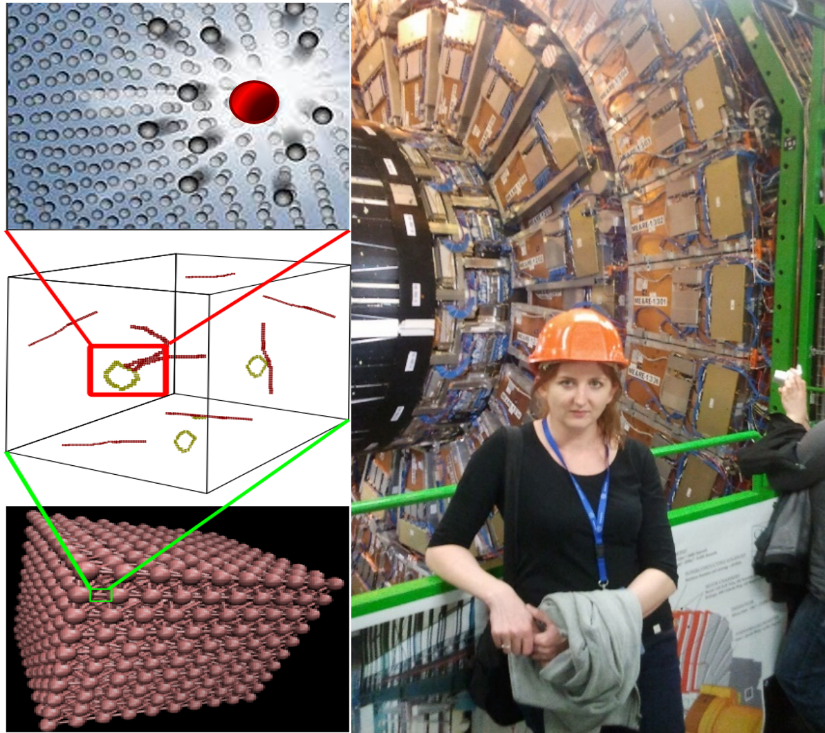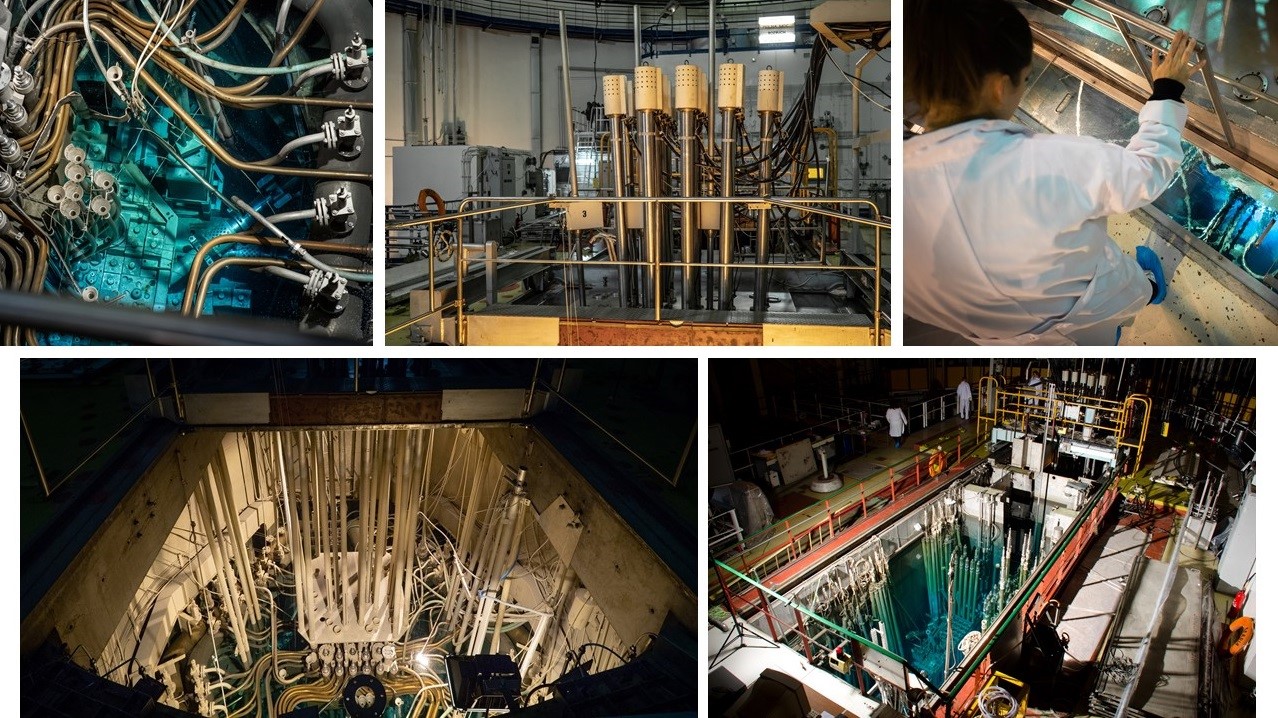Aneta Ustrzycka PhD (Department of Experimental Mechanics) received funding from the National Science Centre for her research on the influence of radiation on the mechanical properties of materials for new generation reactors.
Project: Multiscale constitutive modelling of irradiation effect on mechanical properties of austenitic stainless steels, coordinator A. Ustrzycka
The thermo-mechanical property changes of materials during irradiation have fundamental meaning for the design of structures operating in extreme conditions. The evaluation of damage generated in solids located in radiative media is a major challenge in many technological domains connected to electronic, space and nuclear industries. The development of nuclear reactor structural materials is the most important part of the effort leading to improve a reliable, environmentally safe, and more efficient nuclear energy production system. During irradiation, energetic particles, such as the electrons, protons, neutrons, light and heavy ions introduce significant microstructural damage in a variety of materials. The nature of the damage in crystalline materials is mostly associated with the formation, distribution and interaction of point defects, vacancies and interstitials and their clusters. Materials subjected to high dose irradiation by energetic particles often experience severe damage in the form of significant degradation of their mechanical and physical properties. Understanding the mechanisms of radiation damage clearly has a significant impact on the design of radiation tolerant materials.

The objective of the project is developing a physically based, multiscale constitutive model of irradiated materials. The effect of irradiation on the mechanical properties of metals subjected to various mechanical loading and temperature conditions will be analysed. Novel approaches based on a peridynamic theory will be used to build a nonlocal model for irradiated materials that captures the physical features.
The research will be carried out within two major parts comprising the experiments and constitutive modelling of radiation induced damage mechanisms in materials subjected to monotonic and cyclic mechanical loads. The simulation of irradiation effects in structural materials using ions irradiation will be performed. The scanning transmission electron microscopy (TEM) will be used to identification of radiation defects like cluster of voids and helium bubbles formation. Knowing the dpa level, the tension/compression tests will be executed. Damage identification procedure is based on the evaluation of elastic modulus and hysteresis loops variation during these tests. The irradiated layers will be analysed by the nanoindentation technique in order to measure the mechanical properties. Identification by nano and micro-indentation methods of micromechanical properties (elastic modulus and hardness) of ion-irradiated layers will be performed by using Berkovich and spherical indenters at different stages of cyclic loading.
The constitutive multiscale model for irradiated solid materials will include the constitutive equations of the yield stress after irradiation and the expressions of the strengthening components for microstructure features such as forest dislocations, dislocation loops, cavities and point defects, relevant kinetics laws of evolution of radiation induced micro-defects. Two types of damage descriptor variables allow to capture the radiation induced porosity and the evolution of the dislocation loops generated by irradiation. The constitutive model includes the kinetics laws for both damage descriptor. The mathematical description of the thermo-mechanical property changes of materials during irradiation takes into account the existence of coupled fields: the plastic strain field and the radiation induced microdamage and microdefects fields. The model will be developed in the framework of multiscale description and will take into account the relations between all the parameters and the state functions at the micro-, the meso- and the macroscopic levels. At the atomic scale, processes occurring in irradiated materials during a displacement phase of the collision will be studied by molecular dynamics (MD) simulations. Information about the character and energetics of the vacancy and self-interstitial clusters with MD database of the spatial distribution of primary damage production will be used in a peridynamics model. At the meso- and macroscopic levels, a novel material model based on nonlocal peridynamic theory will be proposed. The peridynamics theory is suitable for dealing with the problems of radiation induced damage evolution under mechanical loads. Peridynamics can provide suitable tools for direct simulations of processes like these proposed in our project: indentation tests and tensile tests with various rate of loading for more detailed research of rupture process.
Correct description of dissipative phenomena and couplings between them, as well as their influence on behaviour of materials has fundamental meaning for the design of devices operating and their lifetime estimation. There is nowadays ever increasing interest of the research and development and technical sectors in modelling of materials capable of operating under extreme conditions. Developing the effective physical model of the phenomena under consideration will allow to extend the class of materials, as well as to extend the operational conditions of the currently used materials.
















